Since 1998, the Bayerische Staatsgemäldesammlungen has restituted 24 artworks from 15 collections. Additional two works have been awaiting restitution since 2019/20.
Restitutions
Overview of the restitutions of the Bayerische Staatsgemäldesammlungen

13.03.2024: Restitution of a painting and two sculptures to the heirs of Jakob Goldschmidt
The Bayerische Staatsgemäldesammlungen and the Bayerisches Nationalmuseum have restituted a painting by Hans Wertinger (Philip of the Palatinate, Bishop of Freising, inv. no. 12030) and two 16th-century sculptures from Nuremberg (the wooden statuettes ‘Adam’ and ‘Eve’, inv. nos. 53/137 and 53/138) to the heirs of the Berlin banker and entrepreneur Jakob Goldschmidt (1882–1955). The painting had been transferred to the collection of the Bayerische Staatsgemäldesammlungen in 1953 having formerly been held by the Nazis; the sculptures had been acquired by the Bayerisches Nationalmuseum in exchange for other works that same year.
The collector Jakob Goldschmidt
Jakob Goldschmidt was one of the most influential bankers in the Weimar Republic and was regarded as a ‘central figure in the world of finance’. His position as a leading member of the management board of the major Darmstädter und Nationalbank (Danat-Bank) and as a member, at times, on more than 100 supervisory boards, testify to this. From the end of World War I onwards, Goldschmidt collected art on a large scale and was able to build up a significant collection. He was a patron of Berlin’s museums and supported the Kaiser Wilhelm Society. He furnished his country house in the Potsdam villa colony of Neubabelsberg, that he had had built in 1921, with numerous works of art. Goldschmidt also acquired a villa in Berlin’s Matthäikirchstrasse in 1929, in which there were also large numbers of artworks.
After the collapse of the Danat-Bank in summer 1931 in the course of the Great Depression, Goldschmidt was held (jointly) responsible by the Nazis for the subsequent bank crisis. In April 1933, he was initially forced to emigrate to Switzerland. From there he fled to New York in 1936. Goldschmidt suffered considerable financial losses as a result and, among other things, had to pay Reich Flight Tax totalling more than 1.8 million Reichsmarks. In 1940, he lost his German citizenship and one year later his remaining assets in Germany were confiscated by the Nazis. He initially managed to rescue part of his art collection and take it abroad, thanks to the support of Fritz Thyssen. The rest of the collection that, in the meantime, was also being used as collateral, remained in Germany where it was auctioned off, mainly in two sales, in 1936 and 1938.
ON THE FURTHER PROVENANCE OF THE WORKS
The painting by Hans Wertinger was acquired by Julius Streicher, the Gauleiter for Middle Franconia, through the Frankfurt auctioneer’s Hugo Helbing, run by Arthur Kaufmann, in June 1936.
At this auction, around 300 works from the Goldschmidt Collection were offered anonymously as ‘artworks in the ownership of a Berlin collector’. These included the two sculptures that were, however, not sold. After the end of the war, the American Forces seized the painting by Wertinger, found in the house of Julius Streicher’s brother Max Streicher in Deggendorf, Bavaria, and initially took it to nearby Schloss Egg.
On 2 October 1946, the work was removed to the Central Collecting Point in Munich. As no application for restitution had been filed, the Free State of Bavaria was able to transfer ownership of the painting in 1953 on the basis of the Allied Control Council Directive No. 57 of 15 January 1948, after which it entered the Bayerische Staatsgemäldesammlungen. The sculptures that had not sold in 1936 were again offered for sale in March 1938 by the auction house Lempertz in Cologne. The next known owner was the art dealer Johannes Hinrichsen of Bad Aussee (formerly of Berlin), who presumably bought them at Lempertz and sold them on to the Swiss art collector and armaments manufacturer Emil Bührle. In 1953, the Bayerisches Nationalmuseum acquired both sculptures from Bührle in exchange for a 14th-century Pietà.
There is clear evidence that Goldschmidt’s financial situation deteriorated rapidly under Nazi rule. Jakob Goldschmidt was forced to accept the sale of part of his art collection. The auctions would not have taken place were it not for Nazi rule and are, therefore, to be considered a manifestation of the disappropriation of assets as a result of persecution. Seen in this light, the Bavarian State Ministry of Science and the Arts has agreed to the restitution of the artworks.
· Statement by Markus Blume, Bavarian State Minister for Science and the Arts:
“The results of the provenance research are clear: Jakob Goldschmidt was unjustly persecuted during the Nazi era and robbed of his assets by the Nazi state. The restitution of a painting by Hans Wertinger and two sculptures from the 16th-century to the rightful heirs is, therefore, more than just a matter of course for us; it is an ethical obligation! With the restitution of unlawfully seized art treasures, we are restoring a measure of justice and making a decisive contribution towards the processing of Nazi crimes. Many thanks to the Bayerische Staatsgemäldesammlungen and the Bayerisches Nationalmuseum who were able to clarify the provenance of the three artworks owned by Jakob Goldschmidt through their painstaking research.”
· Statement by Prof. Dr. Bernhard Maaz, Director General of the Bayerische Staatsgemäldesammlungen:
“The painter Hans Wertinger is one of the most important German Renaissance artists and was a portraitist of great mastery. We are delighted to be able to hand over such an exquisite work to the descendants of the persecuted family after so many decades and as a result of lengthy research, as a reminder commemorating a magnificent former private collection.”
· Statement by Dr. Frank Matthias Kammel, Director General of the Bayerisches Nationalmuseum:
“The return of the two statuettes from the circle of Veit Stoß to their rightful owners is also a source of great satisfaction for the Bayerisches Nationalmuseum.”
· Statement from the Goldschmidt heirs:
“Jakob Goldschmidt’s heirs are very pleased about the return of the artworks and the associated recognition that their loss was the result of the vicious agitation and persecution to which their grandfather was subjected, before and even more so after the seizure of power by the Nazis.”

09.05.2022 I RESTITUTION OF THE PAINTING “Ulanen auf dem Marsch" (UHLANS ON THE MARCH) BY HANS VON MARÉES TO THE MAX STERN ESTATE
In 2015 the Bayerische Staatsgemäldesammlungen received a request for the restitution of a work by Hans von Marées (‘Ulanen auf dem Marsch’/‘Uhlans on the March’, inv. no. 15010) from the Max Stern Estate, represented by the Holocaust Claims Processing Office (HCPO). After intensive research and the mutual exchange of information related to the provenance of the work, the Bayerische Staatsgemäldesammlungen suggested submitting the case to the Advisory Commission.
Following the hearing of both parties to the case ‘Dr. and Mrs. Max Stern Foundation / Bayerische Staatsgemäldesammlungen’ on 25 June 2019, the Advisory Commission for the restitution of cultural assets seized as the result of Nazi persecution, especially those formerly in Jewish ownership, under the chairmanship of Prof. Hans-Jürgen Papier, agreed to recommend the restitutition of the painting ‘Ulanen auf dem Marsch’ by Hans von Marées, in the ownership of the Bayerische Staatsgemäldesammlungen, to the heirs of Dr. Max Stern, the Dr. and Mrs. Max Stern Foundation, with two provisos.
The first proviso for the restitution is that the Dr. and Mrs. Max Stern Foundation is obliged not to sell the painting within the next ten years so that, if evidence of a primary claimant should emerge, the work can be restituted to that person. In the event that, in the course of further research work on Dr. Max Stern (the deadline begins with the guarantee of unrestricted access to all documents related to the estate), new findings come to light that speak against the restitution of the painting, for example because – retroactively – it emerges that the sale of the painting, or comparable sales of paintings at that time (around June 1936), would, in essence and in all probability, have come about irrespecitve of the National Socialist regime, the Dr. and Mrs. Max Stern Foundation shall be obliged – and this is the second proviso – to return the painting to the Bayerische Staatsgemäldesammlungen. The recommendation can be found on the Advisory Commission’s website.
The Bayerische Staatsgemäldesammlungen have accepted the recommendation in full, and restituted the work to the Max Stern Estate on 9 May 2022, under the provisos stipulated by the Commission.

27.08.2021: Restitution of the painting „Frühlingslandschaft“ (Spring Landscape) by Johann Sperl to the heirs of the entrepreneur and art collector Sigmund Waldes
The Bayerische Staatsgemäldesammlungen have restituted the painting "Frühlingslandschaft" (Spring Landscape) by Johann Sperl (1840-1914, inv. no. 12572) to the heirs of the entrepreneur and art collector Sigmund Waldes (1877-1961), following a restitution application by the heirs. As part of broader research into its art holdings of National Socialist origin, the Bayerischen Staatsgemäldesammlungen conducted intensive research into the provenance of the painting in question. This confirmed the results of research by representatives of the heirs (report by Dr. Irena Strelow), namely that the work was seized from its owner Sigmund Waldes in 1939/41 as a result of Nazi persecution. This 22nd restitution by the Bavarian State Painting Collections following the Washington Principles of 1998 is not being marked with a ceremonial handover due to the pandemic. This is both at the request of and in agreement with Sigmund Waldes’s heirs.

31.05.2021 I Restitution of the painting "Fischerboote bei Frauenchiemsee" (Fishing Boats near Frauenchiemsee) to the community of heirs of its former owner Alfred Isay
The painting „Fishing Boats near Frauenchiemsee“ by Joseph Wopfner was formally restituted to the community of heirs of Alfred Isay in December 2019. It was planned for the work to be handed over in March 2020 in Munich but this was cancelled due to travel restrictions necessitated by the Covid-19 pandemic. This, the 20th restitution made by the Bayerische Staatsgemäldesammlungen in line with the ‘Washington Principles’ of 1998 will now take place without the work being handed over personally because of the continuing pandemic and at the request of the community of heirs.
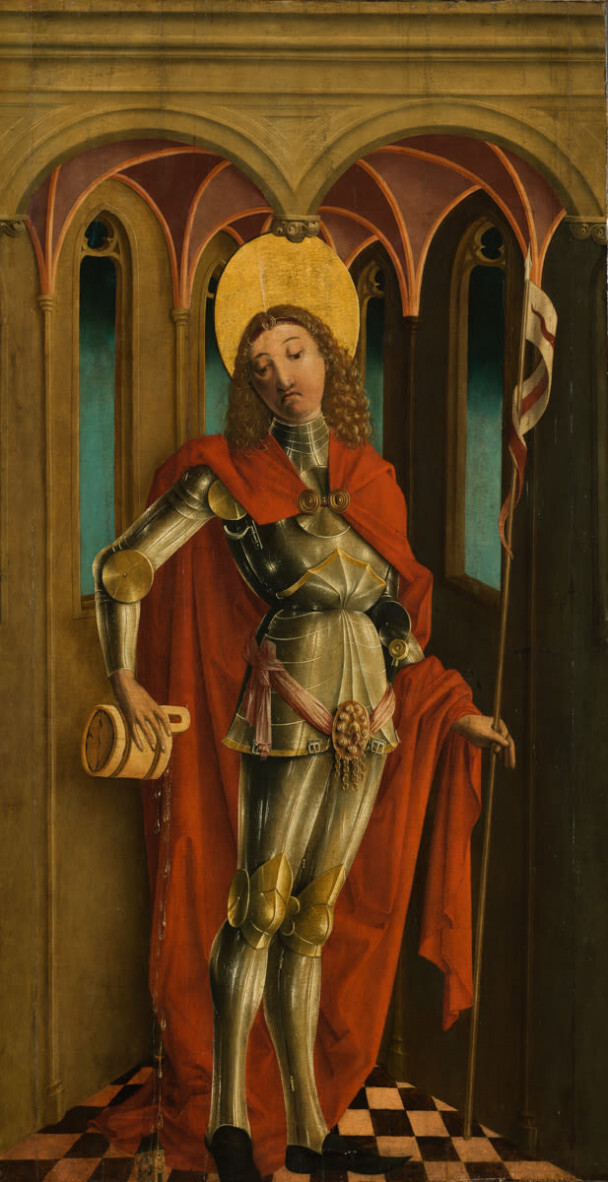
23.04.2021 I Restitution of a wooden panel depicting Saint Florian formerly in the ownership of the art dealer A. S. Drey to the legal successors
In April 2021 a late medieval wooden panel depicting Saint Florian, formerly in the ownership of the art dealer A. S. Drey, was restituted to the legal successors, i.e. to the community of heirs of the art dealer A. S. Drey. The work is to be handed over to a legal representative of the art dealer’s on behalf of the community of heirs. This, the 21st restitution made by the Bavarian State Painting Collections in line with the ‘Washington Principles’, will take place in the Pinakothek Museum without a personal meeting due to the pandemic.

05.08.2019 I Restitution of nine works of art to the heirs of Julius and Semaya Franziska Davidsohn
Nine works of art (five paintings, three colour engravings and a wooden panel with ivory reliefs) were returned to the heirs of the Jewish previous owners, Mr and Mrs Davidsohn, on 5 August 2019 - the works had been confiscated in Munich in 1938.
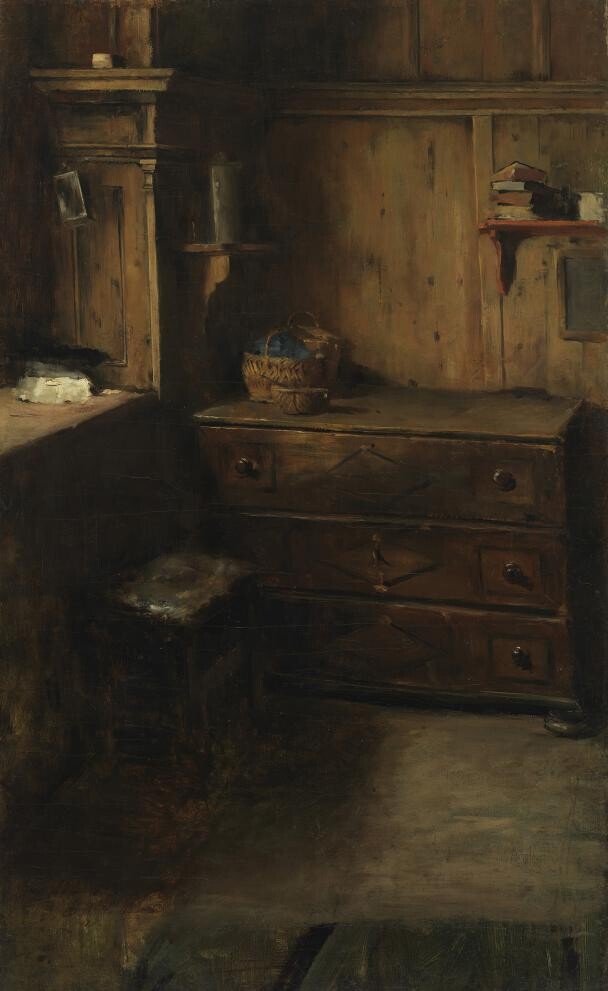
25.07.2018 I Restitution of the painting "Bauernstube" (Farmhouse Parlour) by Ernst Immanuel Müller to the community of heirs of Ludwig Friedmann
As a result of proactive research in 2017/2018 the Bayerische Staatsgemäldesammlungen are restituting a work by Ernst Immanuel Müller to the community of heirs of Ludwig Friedmann (30.10.1880-07.03.1943).

21.07.2017 I Restitution of the painting "Die Aufwerweckung des Lazarus" (The Raising of Lazarus) to the community of heirs of James von Bleichröder
The Bayerische Staatsgemäldesammlungen has returned the painting 'The Raising of Lazarus' by a south-German master to the community of heirs of the Berlin lawyer Dr. James von Bleichröder.
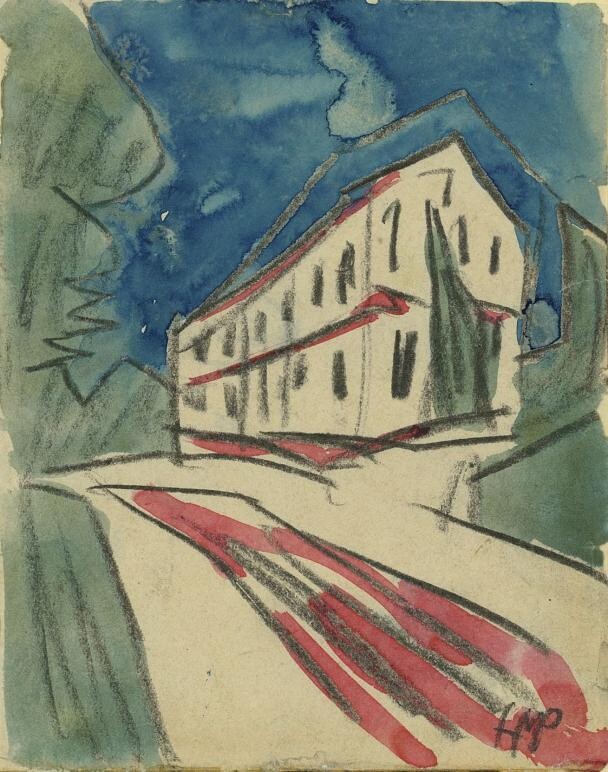
15.05.2013 I Restitution of works of art to the heirs of Prof. Curt Glaser and George Behrens
The Bayerische Staatsgemäldesammlungen has returned two watercolours by Max Pechstein from the collection of Curt Glaser and one painting by N. V. Díaz de la Peña from the collection of George Behrens.

10.07.2012 I Restitution of a Floral Still Life from the Workshop of Jan Brueghel the Elder to the heirs of Julius Kien
The Bayerische Staatsgemäldesammlungen has returned the painting "Flowers in a Stoneware Vase" from the workshop of Jan Brueghel the Elder to the descendants of the Viennese business-owner Julius Kien.

12.05.2010 I Restitution of four paintings to the daughter of the art historian August Liebmann Mayer
The Bayerische Staatsgemäldesammlungen returned four paintings from the collection of August Liebmann Mayer: A portrait of a woman by Wilhelm Thöny, a painting of the Madonna by Cristoforo de’ Moretti, a painting of the Apostles from Cologne and a portrait of Christ from the 19th century were returned to the daughter of the Jewish art historian August Liebmann Mayer (1885–1944), who now lives in Los Angeles.
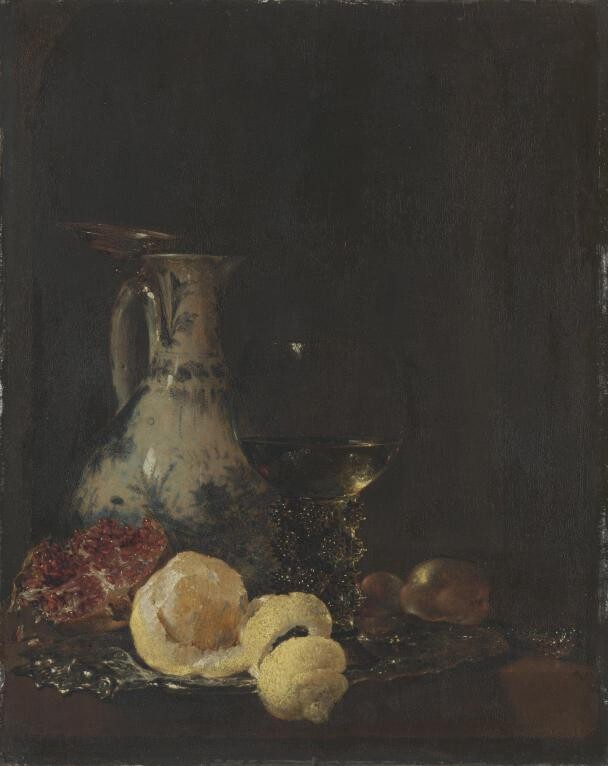
23.06.2008 I Restitution of a Still Life by Willem Kalf to the Grandson of the former owner Josef Block
The Bayerische Staatsgemäldesammlungen returned a still-life by Willem Kalf to Peter Block from Hamburg, the grandson of the painter and art collector Josef Block.

14.09.2005 I Restitution of the painting "Musical Entertainment" by Fritz Schider to the community of heirs of Dr. Max Meirowsky
The painting "Musical Entertainment" by Fritz Schider was returned by the Bayerische Staatsgemäldesammlungen to Dr. Jost von Trott zu Solz, the representative of the heirs of the original Jewish owner. The painting belonged to the art collector Dr. Max Meirowsky prior to the Nazis coming to power.

05.10.2004 I Restitution of the painting "Dusk at Lake Garda" by Hans Thoma to the heirs of Ottmar Strauss
The painting "Dusk at Lake Garda" by Hans Thoma was restituted by the Bayerische Staatsgemäldesammlungen to the heirs of the former Jewish owner Ottmar Strauss.
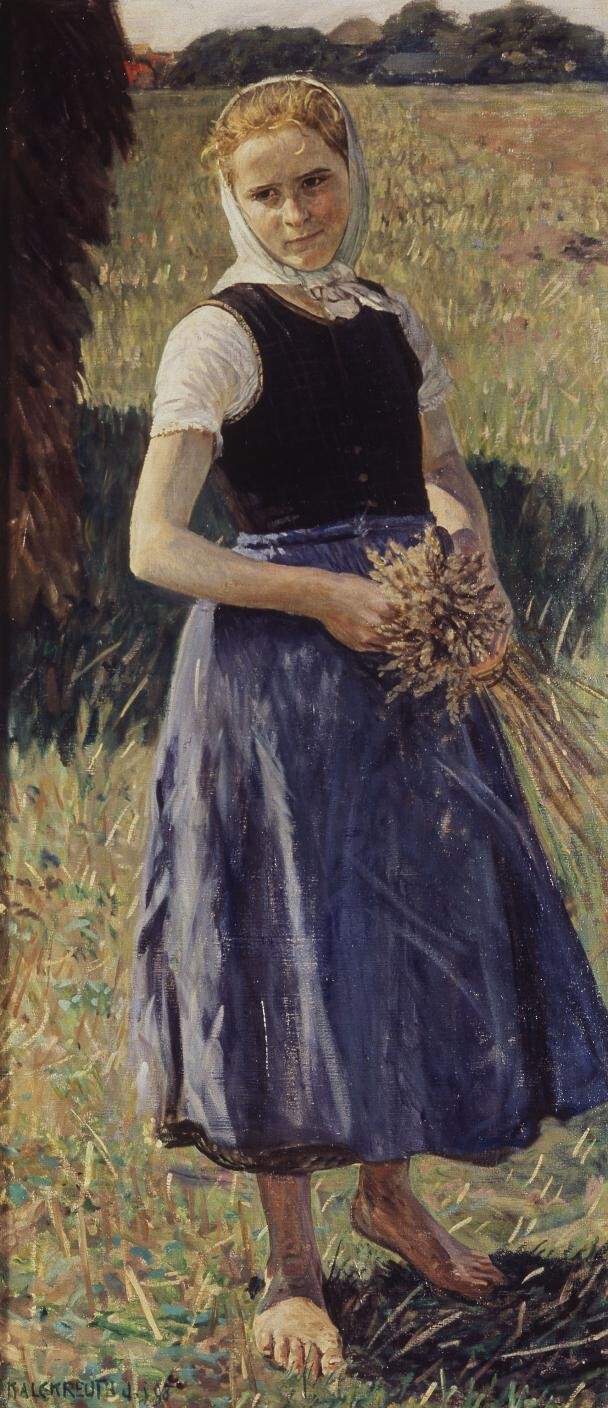
13.03.2000 I Restitution of the Triptych "The Three Ages of Life" by Leopold Graf Kalckreuth to the heirs of Elisabeth Glanville
The former director-general of the Bayerische Staatsgemäldesammlungen, Dr. Reinhold Baumstark, returned the triptych "The Three Ages of Life" by Leopold Graf Kalckreuth (1855–1928) to the surviving descendants of Elisabeth Glanville in London.